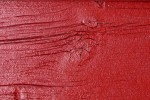France has been known as a global art capital for some time. In the years leading up to this international acknowledgment, artistic ideas seemed to be constantly percolating throughout the country. This was especially true for post-Impressionist painter Émile Bernard (1868-1941). Bernard’s ideas led him to express himself through several artistic styles, but he is best known for being on the front lines of art movements such as Cloisonnism and Synthetism.
Painting served as more than a form of expression for Bernard. The French artist believed that technique was less important than clear portrayal of the idea. When an idea was portrayed clearly, Bernard might have said, truth could be found. More so, he felt a simplified approach to art allowed him to visibly express the invisible. For instance, when painting natural landscapes, he put effort into conveying the sensations he experienced rather than creating an accurate depiction of the scenery.
“There I was expressing myself more, it was me that I was describing, although I was in front of the nature. There was an invisible meaning under the mute shape of exteriority.” – Émile Bernard
In his words, he sums up the styles he is best known for as a “[simplification of] nature to an extreme point. I reduce the lines only to the main contrasts and I reduce the colors to the seven fundamental colors of the prism. To see a style and not an item. To highlight the abstract sense and not the objective.” This, he believed, help to “appeal more to internal memory and conception.”
Émile Bernard was driven to protect the fragility of his ideas with simplified art styles. Agreeing with his philosophy was post-Impressionist painter Paul Gauguin. Bernard and Gauguin formed a close friendship and shared their art frequently. In addition, Bernard was known to converse with Vincent van Gogh often and, later in life, he got to know Paul Cézanne. However, long before notable friendships, philosophical ideals, and symbolic artwork, Émile Bernard realized his ideas could take flight when he expressed them through art.
Bernard was born in France in 1868. At a young age, his parents took him to stay with his grandmother. She was said to be an encourager of his art. In fact, one of his early paintings was a portrait of his grandmother; it was titled La Grandmère (1887).
The family moved to Paris in 1878 where Bernard attended school. While receiving formal education, he tried his hand at Impressionism and Pointillism. However, this experiment took place when he attended Atelier Common in Paris, where he enrolled in 1884. It was later rumored that he was expelled from the school for “showing expressive tendencies in his paintings.” With his traditional education cut short in 1886, he set out to travel through Brittany, a north-west region of France, on foot. The landscapes he experienced on these independent travels influenced his artwork and art philosophies.
In Brittany, at a commune called Pont-Aven, Bernard got to meet Paul Gauguin. The two hit it off quickly and would influence each other’s work for years to come.
The year 1887 was a turning point in Bernard’s career. His art began attracting attention of fellow artist van Gogh, as well as Louise Anquetin and Toulouse’ Lautrec (whom he first met in school). Together, the artists painted and hosted exhibits, creating an artist group known as school of Petit-Boulevard.
In 1888, Bernard had the opportunity to work with Gauguin and van Gogh, which allowed all three to participate in and greatly influence the history of modern art. Unfortunately, van Gogh died two years later and fame was cut short for Bernard, too. In 1891, Bernard felt snubbed when Gauguin was given credit for introducing Symbolism and Synthetism to the world. Bernard felt that the art critic Georges-Albert Aurier should have acknowledged him as the guide for these art movements.
Émile Bernard went onto befriend other artists and travel. He went to Italy in 1893 and then moved to Egypt, where he stayed until 1903. The following year he returned to Paris where he taught at École des Beaux-Arts. He stayed there until his death in 1941.
Throughout his life, Émile Bernard tried his hand at various art styles but goes down in history for his work in Cloisonnism and Synthetism. It is recorded that, towards the end of his life he returned to his Avant-guard roots, painting realistic portraits of females and nudes. Regardless of what style he used, he always presented his ideas with compelling and extraordinary composition.
However, this post is meant to recognize his artist style and some major pieces. For those who want to read more of Émile Bernard’s story, visit this link: http://www.segmation.com/products_pc_patternset_contents.asp?set=BER . Also, Segmation is proud to offer 31 digital Émile Bernard’s patterns. By downloading these paint by numbers masterpieces, you can emulate one of the most fascinating artists who ever lived.
Enjoy the 31 Émile Bernard – Making Ideas Art . Segmation has for you and continue to learn and celebrate the life of a great artist.
Read more Segmation blog posts about other great artists:
Alfred Stevens – A Life Immersed in Art
Benjamin West – The American Raphael
Jan Gossaert – A Great Flemish Painter of Antiquity
Sources:
Be a Artist in 2 minutes with Segmation SegPlay® PC (see more details here)
Join us on SegPlay® Mobile iTunes now available for iPhone and iPad








































